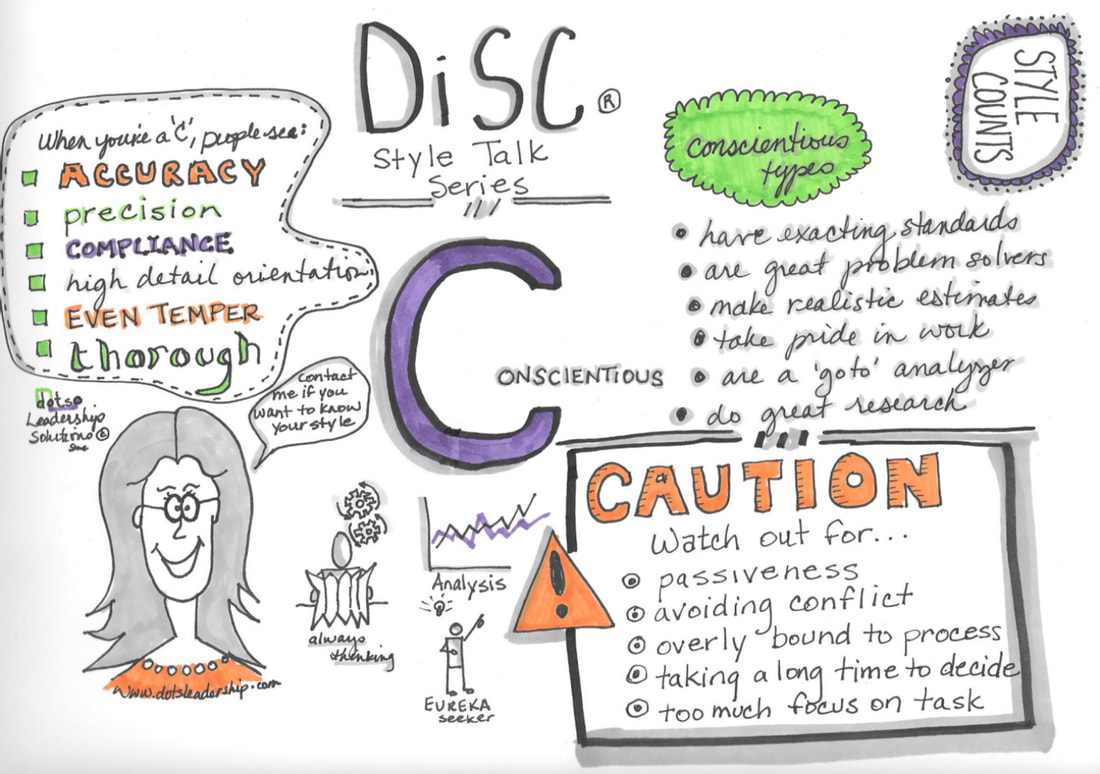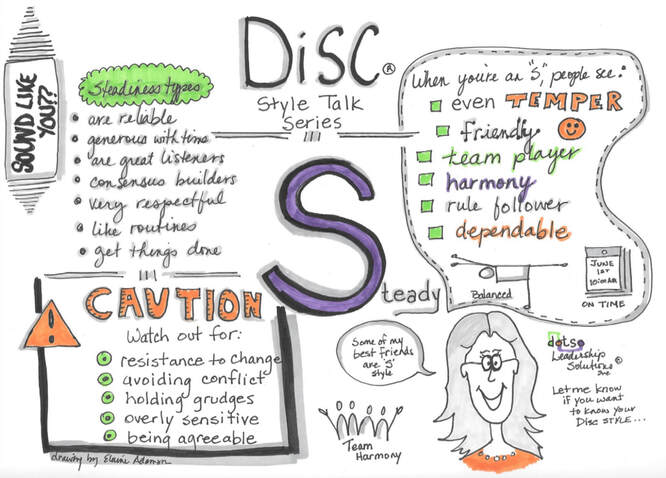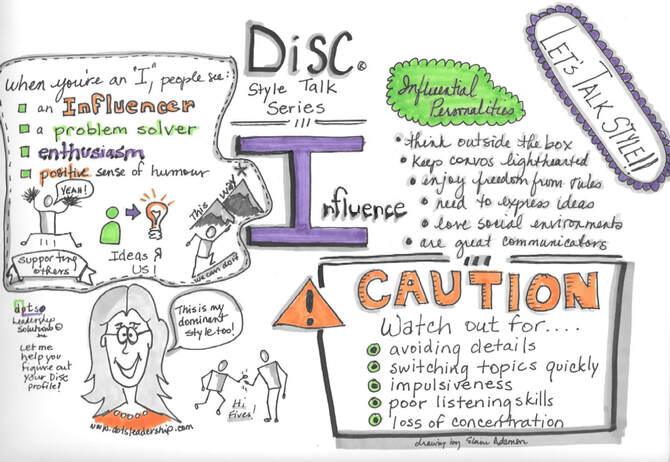Have You Asked Yourself, Am I a Credible Leader?I heard about Tom through leaders in other departments and some of his team.
Tom was a top-level leader; he was sharp, rather humorous, a technically-adept-quick-study, and very good at corporate politics in his highly specialized C-suite role. However what Tom didn’t know, was that most of his team had lost total respect for him as a leader; they didn’t believe half of what he said and few trusted him anymore. As a result, team morale was at an all time low, they spent much of their time cross-checking the many stories he told, second-guessing his every move and gossiping about Tom’s life outside of work.
0 Comments
Oprah Says Everyone Has a CallingWhen talking about success, Oprah Winfrey said "Everybody has a calling. And your real job in life is to figure out as soon as possible what that is, who you were meant to be, and to begin to honor that in the best way possible for yourself."
So how do you do that? When Work Sucks, You Need to GoTime to go – those words rang through my head when I caught up with a work-friend I hadn’t seen in years, as she told me about her job.
It all came back to me... the dreadful soul-sucking heaviness when my old job became absolute drudgery. Looking back, I knew in my heart it was time to go but I continued to persevere, pushing myself to do work that wasn’t ‘me’. I told myself that it was a good job with good pay so I’d be crazy to think about leaving …it even had a pension, and who leaves that at my age! That is her situation too; she is suffering in a job that no longer serves her and she feels so stuck. Does Your Team Trust You?Hey did you hear? Prime Minister Trudeau admitted there was an ‘erosion of trust’ occurring in his office; he was unaware of it (based on what came out in the recent Canadian justice committee inquiry). Imagine his disappointment to find that people did not feel comfortable coming to him with concerns.
Well sadly, he is not alone, many leaders realize a little late that there are issues or an underground culture (where they are excluded) in their workplace. It may not come to light until exit interviews, employee surveys or worse, formal complaints. Getting Tough Feedback Can HurtI will never forget the first time I received tough feedback at work because lets face it, who can forget the moment when the are completely blindsided!
I was managing a government-funded employment centre at the time. While working on a tight deadline to implement a new computer system, I received quite a shock when the Director called me to come to her office ASAP. She told me my peer (Margaret, who I worked with every day) had raised a concern that needed to be addressed immediately. Margaret felt ‘intimidated’ by me and I made her... uncomfortable. Instantly I became defensive – WTF?! Why didn’t she talk to me, what did I do, where was this coming from? Me, are you kidding me… intimidating? I get it! Difficult people on your team can zap your energy ‘getting on your nerves,’ making it a pain to work with them. Well guess what, I’m here to tell you that pretty much every difficult person you will ever lead, can be a great asset; you may even find them not so difficult after all! This series has been dedicated to helping you figure out how to tap into hidden potential of difficult types and minimize the frustration: - Part one when you’re challenged with a “The Know All” (TKA) - Part two for the blow it up Revolutionary type (TNT) or - Part three the Take No Prisoners (TNP) personality type To wrap up the series, I’m going to help you with one seldom discussed, often misunderstood and a very draining style to work with… the Constant Critic (TCC)! You know this type; they tend to be appear very negative. Just like Eeyore (from Winnie the Pooh) who constantly points out the negative in every move. They don’t cause big drama but they do seem reluctant to get onboard with anything new, usually based on some prior experience. The Constant Critic profile:
Meet Pete – “Mr. Quiet Dissonance” Pete (name changed) has an accounting background and works as a Director, Strategic Planning & Performance for a large Retailer. He's been an executive for 5 years but has been with the company for over 20. The 3 people who report to him quite enjoy working with him. He reports to Marnie (not her real name), VP Business Performance who was recently promoted. Marnie and I have been working together on improving her direct team’s collaboration and she asked for help with Pete, in particular. Pete is commonly referred to as the ‘company historian’ and has lived through a couple of mergers, several name changes as well as take over from a US-based company. Marnie was forewarned that Pete seemed disengaged before she took on the team.
Pete is a great example of the Constant Critic personality type! The good news is Pete responded positively to Marnie as soon as she began implementing strategies we spoke about. Her action plan included:
At this point, her focus is on developing more of a trusted relationship, and that maybe all it takes. Marnie's increased interest in his experience seems to have had a positive impact already; the team has noticed Pete becoming more participatory – no more crossed arms in meetings and some have even commented about him being more sociable. The benefit of having a TCC on your team – great devils advocate, can help you develop persuasive arguments, often sees a different perspective and helps to reflect on pending plans. Often they have learned from past mistakes, can be a historian with very helpful information to draw upon. The key to leading a TCC – remain positive, redirect negativity, stick to facts and data that support positive outcomes. Help them see the impact of their behaviour on others if it becomes a problem. Ask the TCC to reframe their initial reaction toward a more positive response. Caution leading a TCC – do not get pulled into negativity. Limit how much time you give when they become negative. For every difficult type of person, there is a way of changing YOUR perspective about what contribution they bring to your team. It may take a little effort, but drawing upon unique perspectives can be a competitive edge for your team. If you are dealing with a difficult person on your team (or even your boss) and you’d like help to figure out how to communicate better with them, send me an email. There are just as many strategies as there are difficult personality types! Bonus tip: Can you see a bit of yourself in Pete? Have you been 'shutting down' at work, avoiding colleagues or find yourself to be increasingly contrary? You may be a Constant Critic or are heading that way. Time to reflect on how negative you may appear to others:
Photo CC0 @bkotynski Unsplash
Thanks for returning to my series about difficult people – I'll be interested to hear what do you think, so far? Do you see how difficult people can be a competitive advantage for your team? Let me know in the comments below. To recap part one of this series I began with “The Know All” (TKA) personality type, you surely know someone who embodies those traits. For part two I spoke about “The Revolutionary (aka TNT) type” who are seldom satisfied with the status quo. For part three I will shed light on the all too familiar, yet quite challenging, difficult ‘Take No Prisoners’ (TNP) personality type. Consider ‘the Donald’ reporting to a leader in a business setting. Yes, that is this rebel style. What do you think, difficult to manage? Oh my, heck yeah! A true leadership test. You may be surprised to know there ARE ways to harness the power of this rebellious in-yo-face type when they report to you (not so easy to when they are running a country). When you guide them the right way, you create a powerhouse talent on your team and even better, leave a lasting positive impact in your company. Meet Liam – The Gun-Slinger Liam (names changed) is an up-and-coming, newly promoted executive in telecommunications. He is 33 years old and incredibly clever. So much so he has been promoted rather quickly. Over a 5-year period he has moved up three times (unusually fast) and is now at the Director level with eyes locked and loaded for a Vice President’s seat. He has been told he has “CEO potential”, which is amazing BUT he tends to share that info with others in an obnoxious ‘boasty’ sort of way. Highly strategic and a quick study, he has demonstrated value in every role very quickly. Liam is highly action-oriented, capable to make change and adapt rapidly. Managers who promoted him looked past some of his behavioural shortcomings for political reasons - because the top bosses really like his boldness. Leaders fanned his fiery flames, instead of providing candid feedback and guidance, for fear they may be seen as a roadblock to his rise up the ladder. When his newest manager Claire, VP Ops (seriously, not her real name or title) reached out for my help, she told me she inherited ‘a blow-hard, pompous, egotistical jerk.’ Claire was ultra motivated to find 'something' to hit home with him before everyone quit on her team. When we started, she was at her whit’s end. Liam is the quintessential Take No Prisoners (aka TNP) profile. The Take No Prisoners profile:
The benefit of having a TNP on your team – quick decision makers, they assess risk swiftly, are very determined, action oriented, inventive, shrewd and persistent. The key to leading a TNP is trust and mutual respect. Set high expectations regarding their behaviour; hold a mirror up to see results of their approach; be liberal with praise at the right times. Listen to their ideas, positively reinforce relationship building, and be candid with feedback that will benefit them with very firm correction if they appear to burn a bridge – they appreciate that directness. Caution for leading a TNP – they require a firm leader whom they respect or they will undermine your efforts. Do not do battle with them as they are very clever, set clear boundaries early on, then hold them to those. The Outcome My approach was to have her build a real genuine connection and be very firm with expectations and harness the positive side of his traits. Claire began to develop two-way trust with Liam:
I hope to become an executive coach to him one day and if I do, I won’t pull any punches. He needs direct feedback to help him succeed; learn how to flex his style yet capitalize on what makes him a powerhouse in business. Could people perceive YOU to be like Liam? Or do you know anyone with this style? Help is Available For every difficult type of person there is a way of connecting to the jewel that may be under a rough exterior. It can take a bit of work on your behalf but having distinctly different personalities on your team can become a strong competitive edge as well as a leadership legacy. If you are suffering with a difficult person on your team (or your boss) and you’d like help to figure out how to communicate better with them, send me an email. There are numerous ways to connect! If you aren’t on my mailing list, you’re missing out on other juicy tidbits to become an effective leader. It is never too late to sign up! I have sign up links all over my site, for your convenience. 🙂 Photo by @anneniuniu on Unsplash
In part one of this series I introduced how to develop a competitive edge while leading difficult people. I began with “The Know All” (TKA) personality type. For part two I’ll focus on another challenging personality, this one is seldom satisfied with the status quo and constantly wants to make changes! The Revolutionary…. aka “TNT” Making it Right I often compare this type of person to Mike Holmes, the builder who seemingly blows up your house to fix all the wrongdoings done by previous contractors to ‘Make it Right’. This kind of person on your team can really test you, pushing at every turn with complaints about process, hand-offs, policy or people. They expect you to fix it. For the conscientious manager this TNT type is very draining to have on your team. You may pride yourself on good quality work like they do, however you’re more apt to be cautious and comfortable with subtle improvements vs high confrontation or making full-scale change. These people can be rather domineering in conversations. They have strong opinions, and even though you may see value in their suggestions, they can be tough to redirect back to work. Rather than doing battle with them, there are ways you can help to leverage their enthusiasm for the greater good! Meet Sati – the Demolition expert Lets take Sati for example (names changed). Sati works for a sales organization as a technical rep and has been there for almost 10 years. She is well liked by both peers and customers, so much so they turn to her to solve all sorts of problems. Sati has a habit of adopting other people’s issues, making them her own to solve, even when they are not in her domain. Her Sales Manager Brian really struggled to get Sati focussed on her own deliverables. Almost daily she would come to him with yet another idea to change...well…pretty much everything. Many conversations began with “Why don’t we....”, “I don’t see why I have to…”, “Why can’t x department do…”. She just constantly challenged. Brian was recently been promoted and knew Sati had some great ideas from working with her as a peer. As the days and weeks followed however, he found her increasingly frustrating to work with. Poking at him day in day out with yet another scheme she wanted him to undertake and fix, yet did not follow through on her own work. Sati is a great example of this Revolutionary – TNT difficult person. The TNT profile
The benefit of having a TNT person on your team – they are opportunistic, filled with ideas, usually very positive, they influence others, thrive on change, deal well with ambiguity and love problems to solve. The key to leading a TNT person is hearing out their ideas and giving them accountability to see changes through. Set expectations for detailed change plans outlining the risks/rewards and benefits to implementing such a change. They do best when they are heard, given meaningful accountabilities with autonomy to implement and are trusted to get it done. Caution for leading a TNT – they need a diligent leader to be available for them, not too hands on, yet someone who sets expectations, timelines then follows through. They need to be heard. The Outcome After Brian and I laid out a plan he implemented a few strategies:
In the following weeks Brian noticed a change in Sati. She stopped the incessant pushing and began to take ownership of some of the issues, working diligently to resolve. Weekly they would meet to discuss progress and Brian began to mentor her on how to look deeper into the details. Sometimes she would actually abandon an issue but not until she had more thoroughly explored it and considered the impact(s). Now Brian is well on his way to becoming a stronger leader and Sati is becoming a greater contributor, not only to the team, but also the organization. For every difficult type of person there is another way to look at what they bring to your team. It can take some effort on your part but encouraging people the right way, who previously were a pain, can actually turn into a competitive edge toward a highly productive team. Join/sign up for our blog updates (link in right margin), or visit often for other useful tips on leading people! If you are tired of struggling to deal with a difficult person on your team (or your boss) and you’d like help to figure out how to communicate with them, send me an email. I have a kit bag full of different tactics that work! Image: CC0 Unsplash @madeincartel
Recently, a client (we’ll call her Yvonne) reached out to me for assistance with a ‘know-all’ on her team. We had such great success improving their working relationship and camaraderie on the team that I decided to pass along some tips!
Many business leaders I talk to grapple with rebels or difficult personality types. Difficult people can test your every-last-nerve, yet once you figure out how to curb their behaviour by communicating effectively, you may discover a competitive advantage on your team. Over the next few blogs, I will give you tips on how to handle some of the most draining types of people:
First up is the case of Alan – The Know All (TKA) Alan – The Know All (TKA) Alan was an effervescent, spirited, high-energy team member, who was very smart. He drove people crazy with his need to be right all the time and his non-verbal, superior behaviour in meetings (like eye-rolling, arms crossed, dismissive noises). Trouble was that most days Yvonne found herself doing damage control when people complained Alan was difficult to work with. Alan spent all of their 1:1 meetings complaining about others who were unresponsive or uncooperative, inhibiting him from accomplishing his work and expecting Yvonne to set THEM right. As a result, Yvonne found Alan to be a drain on her time and energy. Due to the culminating behaviour issues, Yvonne seriously questioned whether to keep him on the team despite the great work that Alan did. After Yvonne filled me in on the many issues, it became obvious that Alan did not build rapport with others and his smug behaviour rubbed people the wrong way. So we set out a plan for Yvonne to begin providing Alan with meaningful and actionable feedback, immediately. Alan fell into the TKA-The Know All profile: The Know All profile (exhibits many of these traits)
The key to leading a TKA is to gain trust by showing them you are ‘in their corner’ but challenging them directly on their behaviour so they can see the impact of their current approach.
Caution to leading a TKA – always have your facts and data in order, never threaten or corner. Pick your battles wisely; focus on behaviour that gets in their way of success vs. labeling the person as a problem. The benefit to having a TKA on your team – this type of person has tons of relevant information to draw upon, they are hard workers, creative problem solvers, decisive, action-oriented, have high standards, are adaptive, and are highly productive. The root of Alan’s problems was that he made others feel dumb or undervalued – the more he touted his smarts, the more others did not want to work with him. They resented his approach because he never took time to value their input, he didn't create a relationship, he would talk too fast, not ask questions and express how frustrated he was in a variety of verbal and non-verbal cues. So What Happened? Once Yvonne began providing more directive feedback, Alan started making positive changes in his approach. Fortunately Alan knew Yvonne genuinely cared about his success and even though it was difficult to hear, he soon realized he came on too strong and decided to take her advice. In a few short weeks, Yvonne began to hear from others that Alan was less combative and appeared more team oriented and helpful. Yvonne is now less stressed and has improved her own skills for giving AND receiving feedback. So Difficult People or Competitive Edge? For every difficult type of person, there are ways to connect to capitalize on the strengths they bring while correcting undesirable behaviour. It can take a bit of work on your behalf but building and encouraging diverse perspectives can be a competitive edge for a high performing team! If you are tired of struggling to deal with a difficult person on your team (or even your boss) and you’d like to know how to better communicate with them, send me an email. I have many more strategies that work! Do you know anyone similar to Alan? I'd be interested to hear what strategies work for you to manage their behaviour or if you have another difficult style you struggle with - please leave me a reply below! Sign up for my blog updates (subscribe in the right-hand column) or bookmark the blog page. The next post one will feature: TNT – The Blow It Up Type – think of a ‘Mike Holmes’ like worker who sees many things that need fixing and thrives on change yet balks at routine work. Photo Credit @ergepic from Pexels Creative Commons CC0 According to Gallup State of the Global Workplace, 85% of employees worldwide are not engaged or are actively disengaged in their job. “The low percentages of engaged employees represent a barrier to creating high performing cultures around the world. They imply a stunning amount of wasted potential.” Wasted potential. How that phrase resonates with me! Death by Administration I'm sad to say, I was one of the walking ‘wasted potential’ not too many years ago. It was a dark and miserable time. My employer was doing a massive restructure, removing spans and levels of management and it was my job, as the HR lead, to implement it for my division. Unfortunately the process they undertook was more of a spreadsheet exercise, versus strategic. So the work I loved and excelled at suddenly switched from senior level advisory work to a massive load of mundane administrative tasks Every. Single. Day. , and it went on for months. This kind of work was my worst nightmare and even though it is hard to admit..I have never been very good at mind-numbing administrative work. It just wasn't the right work for me. What a complete waste! Wasted potential. People can’t thrive when they are doing the wrong work. It devalues them, misuses talents and creates unnecessary pressure. During stress-filled change, leaders can fall asleep at the helm; too busy ducking for cover, they completely overlook the signs of utter disengagement around them. Don’t waste your best resources like that; you will surely lose your highest potential people when you don’t pay attention.
Expert Lessons A great way to stem the tide of employee disengagement is to tap into the abilities of EACH and every person on your team. Get people doing the right work utilizing their best skills, long before a change occurs. According to Gallup's survey analytics it is your high potential talent that will take a walk if they are not engaged, long before the others. These top talent are the experts to learn from! Here is what top talent say will help keep them: Lesson 1
Lesson 7
Engagement Counts The best leaders demonstrate they care about each and every team member by taking an interest. They pay attention, particularly during stressful times, leveraging potential vs wasting it. They make it a practice to develop potential, all the time. They allocate work in a way that plays to their people’s strength and they keep them connected to the bigger picture. When you demonstrate YOUR engagement, harnessing the potential of your best and brightest, you are guaranteed better results for highly engaged employees. If you have a disengaged team (or team member) or are leading through stressful times and need support, I’m only an email away! I help leaders grow and develop by working with them through the toughest of times. I offer a 30-minute free consult. I want to hear from you, tell me about your own experience in the reply section below. Image: CC0 Creative Commons/Pixabay
How to Avoid BurnoutChange can be a dirty word in many work environments today. Lets face it “Transformation” is the buzzword de jour! Almost everyone is feeling the affect of increased workload and the speed of change in their job.
It may be brought on from process improvement, new-fangled technologies to learn, added responsibility, regulatory scrutiny, or the most-feared-change of all…downsizing! Constantly having to adapt, even for the best leaders, takes quite a toll. As a leader not only do you have to continually reframe and communicate the gist of the changes to your team, but you are also expected to be ‘on’ and supportive of whatever is thrown your way. This can be downright exhausting! So how IS change affecting you? Are you coping? Or are you nearing burnout? Take this simple assessment to find out: Watching political leaders wrangle for position, launch smear campaigns and talk trash about each other sure fires up the leadership coach in me. Grown adults identified as so-called “leaders” who choose bully tactics, intimidation and demeaning others as their campaign strategy gets to me every. single. time!
The Canadian province where I live is currently embroiled in a smear-filled provincial election fraught with insults and put-downs; it is such a miserable and appalling ‘gong show’ - wish I could bong the gong to put an end to this conduct! I am not naïve enough to think anyone could simply fix what seems to be wrong with such political behaviour overnight but I hope I live long enough to witness a group of leaders stand and face the masses, clearly state their position, demonstrate what they believe in (without being wishy-washy) and then once elected, set a concrete plan working to get it done in a professional “principled” fashion. In my books, everyone in a leadership position, regardless if they’re running for office or managing a team of 2-20,000 people can be a better leader by leading with principles. My Kind of Principled Leadership
Note: Seeking, receiving and acting on feedback are skills many of us need to develop further. If you have yet to receive constructive criticism from your people about YOU, it is a good sign you have room to grow. If you have received it, consider it a great gift! Now, how did you address it?
The Core Principles in Action One senior level corporate leader I worked with (Katrina McGee….yah, not her real name) truly exemplified the core principles I look for as a Principled Leader. Such a pleasure to work with. I recall one time we were working on a very sensitive and difficult message about a pending reorganization (sadly, one of many). It was a very stress-filled period for her. She painstakingly agonized about every change to the department and fretted over each and every word choice because she personally felt the impact of the tough decisions being made – people truly mattered to her. We were working in her office around 9pm at night, long after others had gone home, when we heard the cleaner in the outer office area singing quite passionately to himself with headphones on. He passed by her door a couple of times - clearly he hadn’t noticed us but we did him. Instead of getting annoyed at the “I hope he buys you flowers” being belted out, she asked if we could take a quick break. She collected up the garbage from around her room and grabbed a fresh bottle of water from her sideboard and went to the outer office. She startled him as she emptied her bin into his cart and then took a moment to chat, giving him the bottle of water and acknowledged his singing prowess. It was obvious they had spoken before as they shared a little chuckle before she returned to the office. You see, she treated everyone with that level of respect and consideration - from the cleaner to every member of her global team to her C-suite colleagues. So genuine was her care for everyone that I can honestly say anybody who ever had the opportunity to work with her would go to the end of the earth to support her agenda. A master at Principled Leadership I would say! I know most of you want to be that kind of leader too. Here are some of the core principles that make all the difference to the teams who look to you as a leader: People Matter Principled Leaders put the interests of people first. Their every action sends a message that everyone is equal and their ideas and opinions matter. It doesn’t mean they will do everything people want, but they ensure their teams feel heard and acknowledged. Respect is Earned Principled Leaders operate with respect for others in everything they do – there is no put down, no intimidation or bullying. They gain the respect of others by treating others fairly and with respect, regardless of their position. Attitude Counts Principled Leaders have a positive attitude. They act in a positive, genuine manner, even during some of the toughest times, ensuring everyone remains calm and productive. Consistency is the Key Principled Leaders are who they are regardless of the situation. Whether riding the elevator, walking through the office or sitting in a board meeting, their every move is consistent and in-line with their good character. Curiosity is a Game Changer Principled Leaders love learning and knowing but will acknowledge openly they actually don’t know everything. They ask a million questions of people – how does that work, why does that happen, why can’t we do that, how can we make it happen. This inquisitiveness comes in handy, seldom are they duped and inevitably they know exactly who to go to if help is needed because they understand the roles/process in their team as well as other groups. Delivering is their Jam Principled Leaders are obsessed with getting done what they set out to do. They are doggedly determined. They make sure all of their team understand the mission and remain steadfast in overcoming whatever obstacles are in the way to deliver on their promises. Can you measure up to being a Principled Leader? Of course you can! You’re likely well on your way if you took time out to read this article and thought about what you currently do! Keep Dots Leadership Solutions in mind as you determine your own development needs and plans for improvement. I’d like to be your personal and confidential leadership development guide. My coaching clients will tell you I hold them accountable to deliver against any goals they set passing along many tips and tactics to help them be a Principled Leader. My style is direct (don't worry, I won't bong the gong on you), yet highly supportive and I bring 25+ years of experience working with leaders from many different industries both big and small – give me a call or drop me an email when you’re ready. Last month we focused on the letter “S” – Steadiness of the DiSC behavioural style.
This month concludes the Style Talk Series as we focus on the profile “C” – Conscientious characteristics. You may also like to review the first two parts of the series focusing on the profile "D"- Dominance, or focusing on the profile "I"- Influence. As previously mentioned, in each article I am highlighting real-life clients who tend to illustrate a strong profile of just one of the DiSC behavioural traits. You will have different degrees of each behavioural style in your own profile but you tend to have a dominant style that many at your work will witness. How you behave compared to people with differing styles to you may be quite different, even when presented with the very same scenario. Meet Nadeem (not his real name) Nadeem is an Accounting Advisory Executive with a leading professional services firm. Nadeem has traveled the world, offering advice on accounting and risk management for 15+ years and is considered a leader in this field. Nadeem has led large, matrixed teams, working on highly complex projects with large multi national corporations providing advice and guidance on Accounting and Tax.
We have identified for Nadeem that he needs to pick up on social cues and demonstrate interest in others. This includes taking a brief time in the first part meetings to greet people and chat for a moment, assess his audience then communicate in a way the other party feels valued. Nadeems’s development plan includes coaching on relationship building. Some areas include meeting preparation; helping him to assess the people he will meet so he is more prepared to make the right first impression. Also we are doing DiSC assessments with each of his direct team to help him decode their styles. Lastly he is working with an internal mentor who has the exact opposite style to his so they can learn to appreciate their differences. In future this will arm him for analyzing people and provide a roadmap for flexing his communication style accordingly. Do you know anyone like Nadeem? Or can you see yourself in his profile? He is a good representative of a strong “C” behavioural style. Can you imagine how it may benefit to you to better understand your own DiSC style and how your style may impact others? Once you see how your style affects people you work with, you can adapt accordingly. Likewise as you leverage team dynamics using DiSC assessment, you can find ways to pair people for the best outcomes as well as anticipate where friction may occur. Do you want your own DiSC Assessment? Email me to reveal the secrets of success. Everything DiSC Workplace® assessment is a great tool to use with your whole team. This assessment will decode how best to communicate for your own success. It makes a great foundational piece for business planning, improving employee engagement and team development. Not only will you receive a detailed report but I will also provide a confidential debrief that delves into your personal profile and/or team dynamic. Drop me a line when you’re ready to learn more about yourself and discuss potential career/leadership derailers so you know how to head them off! Last month we focused on the letter “I” – Influence of the DiSC behavioural style and previously we focused on the “D”.
This month we will continue the Style Talk Series focusing on the profile “S” – Steadiness behaviours and communication characteristics. As I mentioned before, the clients I highlight tend to be symbolic of a strong profile of just one of the DiSC behavioural dimensions, this month using the “S”. In your own DiSC profile you will have differing degrees of each behavioural style. That said, people at work likely have observed your most predominant one because when you are under pressure your most dominant style usually shows up. There is no perfect style, no right or wrong either; just like people are from different backgrounds, we each view a situation and react uniquely because we are approaching it from a different vantage point. This series is to help introduce the benefits of understanding your style. Meet Melissa (not her real name) Melissa is a Senior level Human Resource Business Partner for a global financial institution. Melissa has been in HR (different departments) for most of her 20+ career. She currently supports over 40 executives (various levels) who collectively have over 2000 employees. Her day-to-day work is strategic, focused on providing business executives’ HR advice, shaping and implementing strategic plans. Melissa is keen to be promoted to VP level.
We have identified that for Melissa to move up, she needs to command more authority. Colleagues, leadership and clients enjoy working with her but to be ready for the next move she has to prove she can manage conflict directly and comfortably. Showing she can stand her ground and be more direct in her communications will give senior leaders more confidence in her capabilities at the next level. Melissa’s development plan includes coaching courageous confrontation, role-playing in a safe environment using real-life scenarios and critiquing conversations. Through routine practice she will develop comfort in finding her voice, without sacrificing her strong values for harmony. Do you know anyone like Melissa? Or can you see yourself in her profile? She is a good representative of a strong “S” behavioural DiSC style. Imagine the benefit to you to better understand your own DiSC style and how you impact other people? Once you see how your style affects people you work with, you can modify appropriately. Likewise when your team uses DiSC assessment as a development tool, you will better understand the dynamic of everyone within the team. Some people may be a lot like you when others are not, you will see how to get the best out of everyone when you learn how to communicate to their style. Time for your own DiSC Assessment? Email me to reveal the secrets of success. Everything DiSC Workplace® assessment is a great tool to use with your whole team. This assessment will decode how best to communicate for your own success. It makes a great foundational piece for business planning, improving employee engagement and team development. Not only will you receive a detailed report but I will also provide a confidential debrief where we will into your personal profile and/or team dynamic. Drop me a line when you’re ready to learn more about yourself and discuss potential career/leadership de-railers so you know how to head them off! Last month we focused on the letter “D” – Dominance of the DiSC behavioural styles.
This month we will continue the Style Talk Series focusing on the profile “I” for Influence behaviours and communication style. I personally relate most with this dimension myself, though not quite to the same extreme as my client. As you will see, the client I am highlighting tends to be emblematic of a strong “I” profile which is just one of the DiSC behavioural traits. You will have varying degrees of each behavioural style in your own profile but we all have our ‘go to’ dominant style that others tend to see, particularly under stress. Two people may react quite differently when presented with the same situation, depending on their dominant behavioural style. Meet Daniel (not his real name) Daniel is a Senior Vice President for a national Sales organization that employs 4000+ people across Canada. Daniel worked his way up to a senior level over 18 years of progressive moves. He joined the company directly from University, when he began as an intern in Customer Operations gathering customer information from clients to prepare for year 2000 cut over.
For Daniel to continue to move up in the organization he must take more time to consider data and facts; use solid supporting evidence to help formulate decisions, and incorporate facts into his narrative. He is seen as a promotable resource for the business, he may be considered for President or CEO of a smaller division in the future. Daniel’s development plan includes an executive coach (external) as well as internal mentorship from the CFO, who is giving him guidance and support to develop data-driven decision making. Do you know anyone like Daniel? Or do you see yourself in his profile? He is a good representative of a strong “I” behavioural style. Can you imagine the benefit to better understand your own DiSC style and how you may impact others? Once you grasp how your style affects people you work with, you adapt accordingly. Likewise as you build a team, you can better understand the dynamic of everyone within the team. Some may strike sparks with you, yet they bring tremendous benefit overall when you learn how to communicate to their style. Time for Your Own DiSC Assessment? Email me to take advantage of the insightful perspective of Everything DiSC Workplace® assessment or to arrange a session with your whole team. This assessment will decode how best to communicate for your own success. Not only will you receive a detailed report but I will also provide a confidential debrief where we will delve into your personal profile and/or team dynamic. Drop me a note when you’re ready to learn more about yourself and discuss potential career/leadership de-railers so you know how to head them off! |
Most Popular Posts:
AuthorElaine Adamson is a leadership consultant with Dots Leadership Solutions Inc. A natural dot connector. Passionate about coaching team effectiveness and leadership development she shares over 25+ years of real-life tips and tricks that really work! 
Elaine believes you can discover and leverage strengths to forge a strong team dynamic despite business challenges or organizational change.
She posts some great articles on Linked In too! Topics of Interest
All
Archives By Date
November 2022
|
Specialties |
Company |
|
















 RSS Feed
RSS Feed